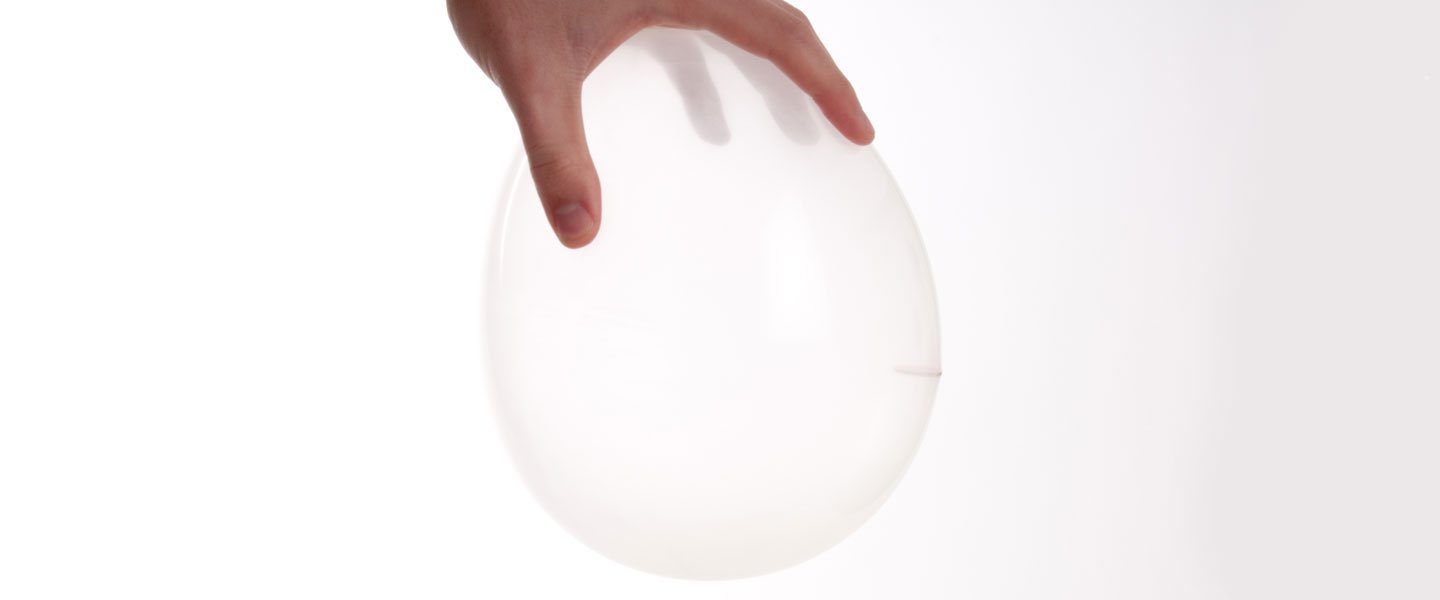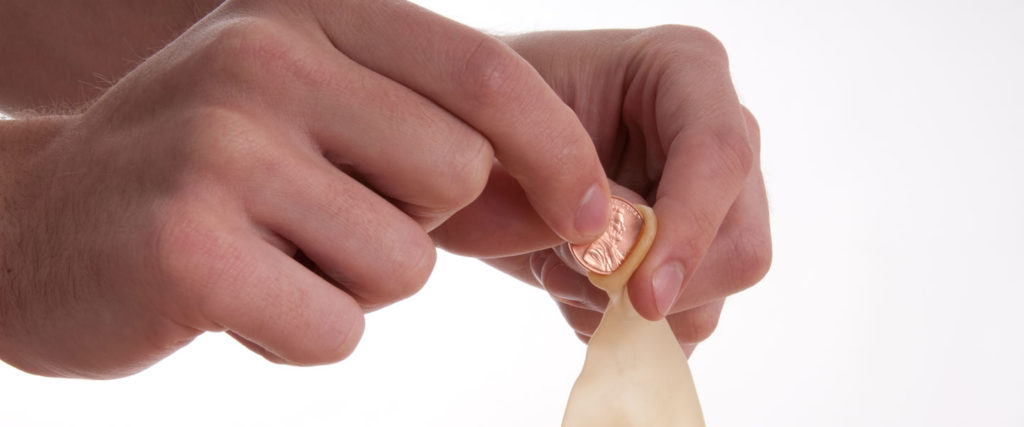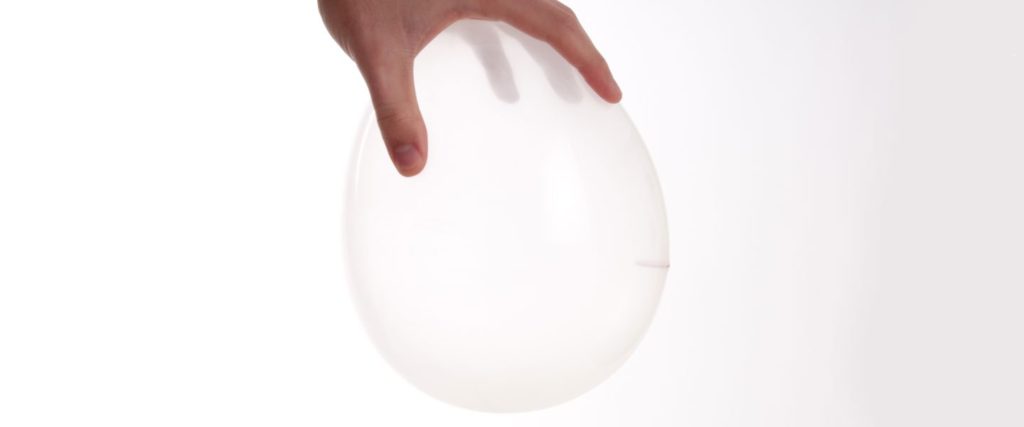Spinning Glasses of Water - Centripetal Force Board
When you swing a bucket of water over your head, you probably expect a big, wet rush of water to soak you as the bucket […]

Warning: The Spinning Penny Balloon is known to be addicting! Once you try it, you’ll find out too late that it’s habit forming and totally cool. Left untreated, you’ll be test-spinning everything in sight. It’s the simplicity of the setup and the wide variety of different sounds you can generate that make it so hard to put down. Besides, you use some very serious science to annoy the heck out of those around you.

Slip a coin or a hex nut (a round object) through the mouth of a balloon. The object needs to go all the way into the balloon so that there’s no danger of it being inhaled as you blow up the balloon. (Clear latex balloons allow you see what’s going on inside but any size and color of ball-shaped balloons will work.)

Inflate the balloon to a comfortable size. That means a size you can easily hold and control.
Tie off the balloon with a simple overhand knot and you’re ready to go.

Grip the balloon at the stem end with your open writing hand. The neck of the balloon is in your palm and your fingers and thumb extend down the sides. The object will be on the bottom, inside the balloon.

While holding the balloon this way, move it in a rapid, circular motion. The object may bounce around at first, but it will soon begin to zoom around the inside wall of the balloon. The best path for the object is about parallel to the floor.
Once the spinning begins, use your other hand to stabilize the balloon, if needed. The object could continue to spin for 30 seconds or more! If it has bumpy sides, you’ll be hearing a lot of noise, too.
As the speed of the object changes, listen to the changes in the sounds it makes and its location inside the balloon.

Stop spinning the balloon and let the object come to a complete stop again on the bottom of the balloon. This activity screams, “Take it further!”
The Spinning Penny is scientific poetry in motion. To understand how and why it works, you have to look at the forces that are acting on the penny (object). Of course, you add the energy to get things started and to keep it going with the force you put in to swirling the balloon. The shape of the balloon forces the penny (or any object in it) to move in a circular path – otherwise, it would continue to move off in a straight line. Another force to consider is friction between the balloon and the object. While there’s very little friction between the edge of the object and the balloon, it is still there and doing its job. Friction finally causes the penny to slow down and to stop. It gets lower and lower inside the balloon because of our old friend, gravity, too. While the object’s mass stays the same, its speed drops because of friction against the balloon and moves lower because of gravity.
The real force in action here is called centripetal force, which means center-seeking. This is a force that is always directed toward the center of circular movement and is actually responsible for keeping the penny moving in a circle. Inside the balloon, it’s the wall of the balloon that causes this to happen. Out in the solar system, it’s the pull of the Sun’s gravity that keeps Earth in its circular orbital path.
Hopefully, you used a bumpy-sided object (like a hex nut) and heard some crazy noises. It sounded like the balloon was screaming! The rough sides of the object don’t roll smoothly over the balloon wall. Instead, it bounces from one flat edge to another. This bouncing accounts accounts for the noise and the change in pitch comes from the speed of the object: higher pitch = faster speed and lower pitch = slower speed.
Use different sized coins and objects to compare how long it takes for them to stop spinning after you stop swirling the balloon. What can you say about how the size or shape of an object changes the outcome?
What happens to your results when you use balloons of increasing diameters? It’s a little tough to handle larger balloons but the results are worth it. If you can get your hands on a really big latex balloon (visit a local party-supply store), then you can see the results of your testing. The size, mass, and speed of the objects spinning inside the balloon will all influence the results you discover.